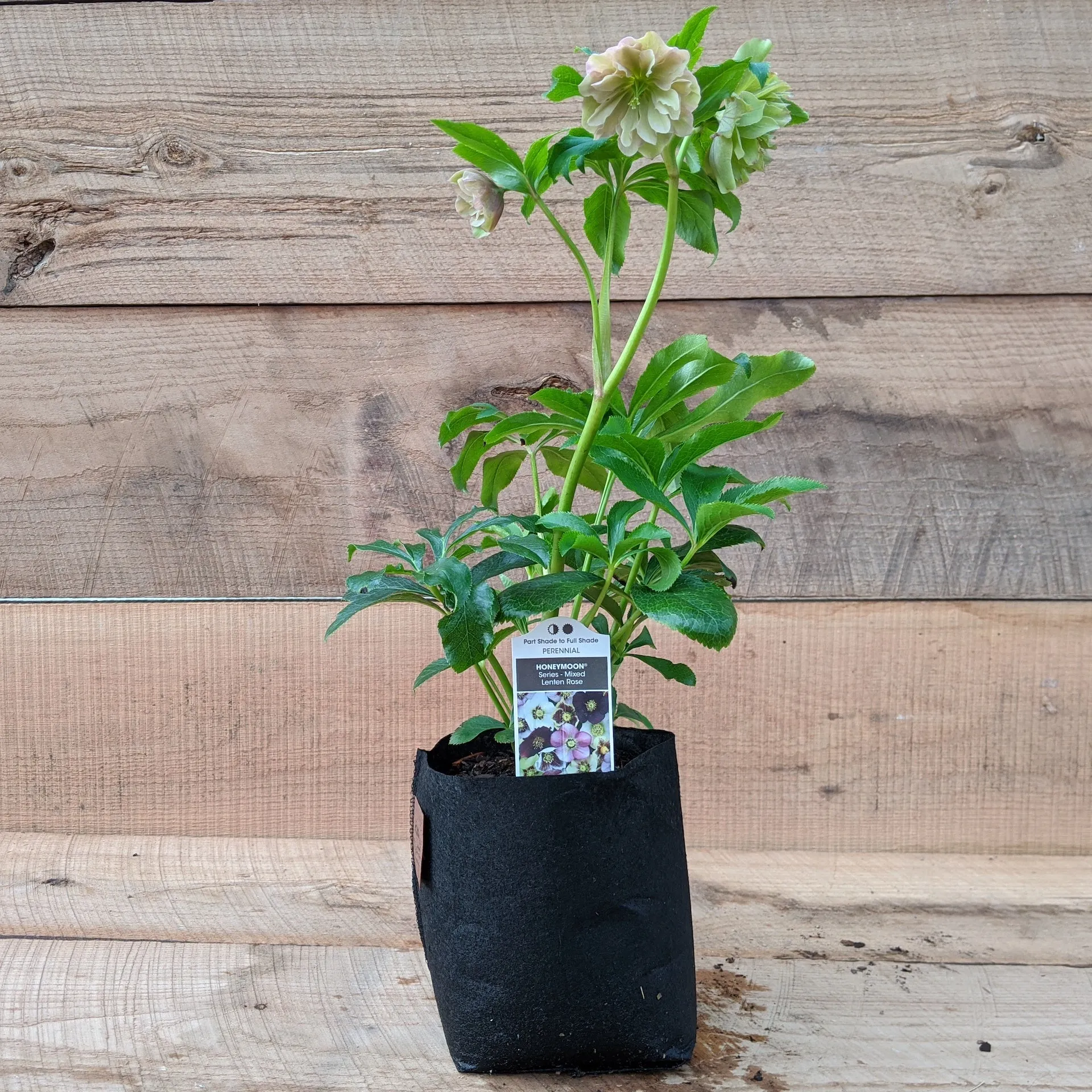What is the Helleborus Honeymoon Series
The Helleborus Honeymoon series represents a captivating collection of hybrid plants, celebrated for their exquisite blooms and resilience in the garden. These plants, often referred to as Lenten roses due to their flowering season, are a favorite among gardeners for their ability to thrive in shade and their ability to add color to the landscape during the late winter and early spring months. The series is the result of careful breeding, resulting in a variety of colors, forms, and growth habits. Discovering the origins and characteristics of this remarkable plant will set the stage for understanding how to successfully cultivate these beauties in your own garden. Their elegance and ability to withstand colder temperatures make them a worthwhile addition to any garden seeking early season appeal.
Understanding the Helleborus Honeymoon Series
The Helleborus Honeymoon series is a testament to horticultural innovation, showcasing the results of meticulous plant breeding. These plants are typically hybrids, combining the desirable traits of different Helleborus species to create superior varieties. This breeding has resulted in plants with improved disease resistance, extended bloom times, and a wide range of flower colors and forms. This understanding of its background is essential for appreciating their unique characteristics. The series is known for its versatility, adapting well to various garden conditions and adding a touch of sophistication to any setting. Their enduring popularity stems from their ease of care and stunning visual appeal, making them a worthwhile investment for both novice and experienced gardeners alike.
Key Features of Honeymoon Hellebores
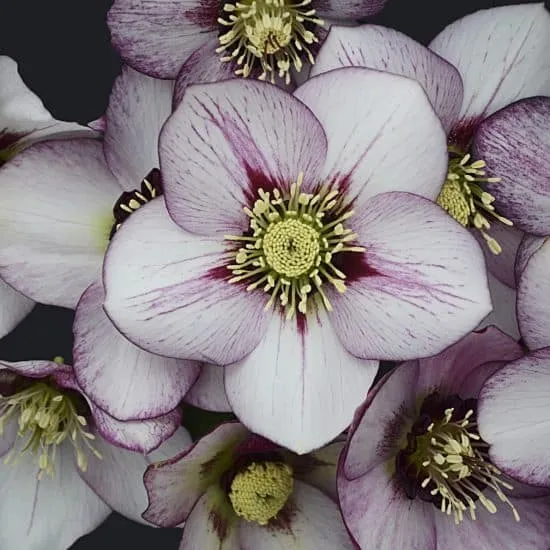
Helleborus Honeymoon plants are distinguished by several key features that make them stand out. Their flowers are perhaps their most captivating attribute, boasting a diverse palette of colors ranging from pristine white and soft pink to deep burgundy and vibrant yellow. The blossoms often feature intricate patterns and textures, adding to their visual appeal. Beyond their flowers, the plants are known for their attractive foliage, which provides year-round interest in the garden. The leathery leaves are typically evergreen, creating a lush backdrop for the blooms and adding a touch of greenery even in the colder months. Furthermore, these plants are celebrated for their resilience and ability to thrive in challenging conditions, making them a low-maintenance option for gardeners.
Why Choose Helleborus Honeymoon Plants
Choosing Helleborus Honeymoon plants offers numerous advantages, making them an excellent choice for any garden. Their early blooming period is a significant draw, providing a welcome burst of color when other plants are still dormant. This ability to bloom in late winter or early spring makes them a valuable asset in any landscape, offering a cheerful display during a time when the garden often lacks visual interest. Moreover, these plants are remarkably shade-tolerant, thriving in areas where many other flowering plants struggle. Their adaptability to various soil conditions and their resistance to pests and diseases further add to their appeal. They also require minimal maintenance, making them perfect for both experienced and novice gardeners.
Benefits of Growing Honeymoon Hellebores
The benefits of cultivating Helleborus Honeymoon plants extend beyond their aesthetic appeal. They are relatively low-maintenance, requiring minimal pruning and care. Their ability to thrive in shade makes them ideal for areas where other plants may struggle. Furthermore, they attract beneficial pollinators, contributing to the health of your garden ecosystem. Their resilience to common pests and diseases reduces the need for chemical treatments, making them an environmentally friendly choice. They also offer a long bloom period, providing weeks of beauty and enjoyment. Finally, the variety of colors and forms available in the Honeymoon series allows for a personalized garden design, ensuring that there’s a perfect Helleborus for every garden setting.
Comparing Honeymoon Series with Other Hellebores
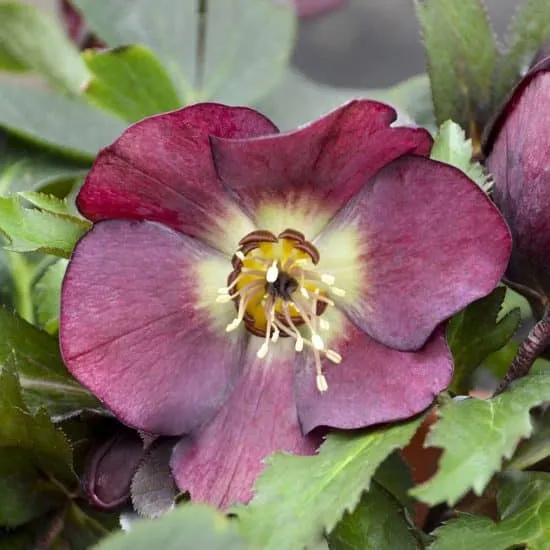
When comparing the Honeymoon series to other Hellebores, several key differences emerge. While all Hellebores share the characteristic of shade tolerance and winter blooming, the Honeymoon series often distinguishes itself through its diverse color palette and the complexity of its flower forms. Some other Helleborus varieties may have simpler blooms or more limited color options. Furthermore, the Honeymoon series is frequently bred for improved disease resistance and longer bloom times. It is important to consider these variations when selecting Helleborus for your garden, assessing which specific traits align with your aesthetic preferences and gardening goals. Some may prefer the simpler elegance of other varieties, while others will appreciate the unique qualities that the Honeymoon series brings to their landscapes.
How to Plant Helleborus Honeymoon Plants
Planting Helleborus Honeymoon plants correctly is essential for their long-term health and beauty. Careful attention to site selection, soil preparation, and planting techniques will ensure that your plants establish well and thrive. Proper planting provides the foundation for years of enjoyment, rewarding your efforts with stunning blooms and lush foliage. Planning is crucial, so begin by choosing the right location and preparing the soil to create an environment where your Hellebores can flourish. With the right approach, you can look forward to creating a garden filled with these beautiful and resilient plants.
Choosing the Right Location for Planting
Selecting the appropriate location is critical for the success of your Helleborus Honeymoon plants. These plants thrive in partially shaded areas, ideally receiving dappled sunlight or morning sun and afternoon shade. Avoid planting them in areas with full sun, as this can scorch their leaves. Also, consider the soil drainage, as Hellebores do not tolerate waterlogged conditions. The site should have well-draining soil to prevent root rot. Observe your garden throughout the day to assess the sunlight levels and choose a spot that offers the right balance of light and shade. Consider the mature size of the plants and provide ample space for them to spread. Choosing the right location is the first step to ensuring these elegant plants will thrive.
Soil Preparation and Amendments

Preparing the soil before planting is crucial for Helleborus Honeymoon plants. They prefer well-draining soil that is rich in organic matter. Before planting, amend the soil with compost, well-rotted manure, or other organic materials to improve drainage, fertility, and water retention. This will provide essential nutrients and create a favorable environment for root growth. Perform a soil test to determine the pH level and amend the soil as necessary to achieve a slightly acidic to neutral pH (around 6.0 to 7.0). Dig a hole that is twice as wide as the root ball and just as deep. Incorporating these amendments will enhance the health and vigor of your Hellebores, ensuring they have the resources they need to thrive and produce their beautiful blooms.
Planting Helleborus Honeymoon Seedlings
When planting Helleborus Honeymoon seedlings, gently remove the plant from its container, being careful not to damage the roots. Place the plant in the prepared hole, ensuring that the top of the root ball is level with or slightly below the soil surface. Backfill the hole with the amended soil, gently tamping it down to eliminate air pockets. Water the plant thoroughly after planting to settle the soil and encourage root growth. Mulch around the base of the plant with organic material like shredded bark or leaf mold to retain moisture, suppress weeds, and regulate soil temperature. Proper planting techniques will set your Hellebores on the path to success.
Caring for Your Helleborus Honeymoon Plants
Providing appropriate care for your Helleborus Honeymoon plants will ensure their continued health, vigor, and beauty. This includes regular watering, proper fertilization, pest and disease management, and appropriate pruning. By implementing these care practices, you can create an environment where your Hellebores will flourish. With just a bit of attention, these resilient plants will reward you with stunning blooms and lush foliage year after year. A consistent care routine is key to maintaining the beauty of these charming plants.
Watering and Fertilizing Guidelines
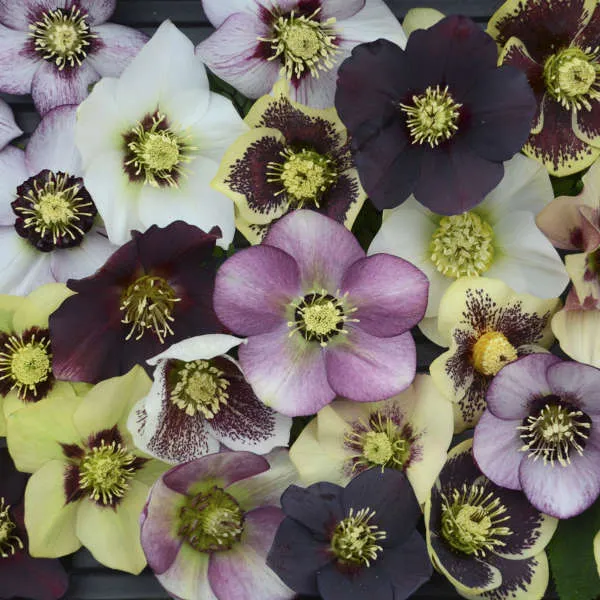
Watering Helleborus Honeymoon plants should be done consistently, especially during dry periods. Water deeply when the top inch of soil feels dry to the touch, ensuring the water reaches the roots. Avoid overwatering, which can lead to root rot. Fertilize your Hellebores in early spring with a balanced, slow-release fertilizer or a well-composted organic material. This will provide the essential nutrients needed for healthy growth and abundant blooms. Avoid fertilizing late in the season, as this can encourage new growth that is susceptible to winter damage. Monitoring the plant’s water needs and providing it with appropriate nutrients will contribute to its overall health and vitality.
Dealing with Pests and Diseases
Helleborus Honeymoon plants are generally resistant to pests and diseases, but it’s important to be vigilant and address any issues promptly. Aphids and slugs can sometimes be a problem, but they can usually be controlled with organic methods. Inspect your plants regularly for any signs of infestation or disease, such as yellowing leaves or unusual spots. Preventative measures, such as providing good air circulation and avoiding overhead watering, can help to reduce the risk of disease. If pests or diseases do arise, address them promptly with appropriate treatments, such as insecticidal soap or a fungicide. Maintaining a healthy plant will help it resist pests and diseases naturally.
Pruning and Maintenance Tips
Pruning and general maintenance are minimal but beneficial for Helleborus Honeymoon plants. Remove any dead or damaged foliage in late winter or early spring before new growth emerges. This helps to improve air circulation and enhance the plant’s appearance. You can also trim the old flower stems after they have finished blooming to encourage new growth and keep the plant tidy. Mulching around the base of the plant helps to retain moisture, suppress weeds, and regulate soil temperature. Consistent maintenance will keep your plants looking their best and will promote vigorous growth and flowering.
Propagating Helleborus Honeymoon Plants
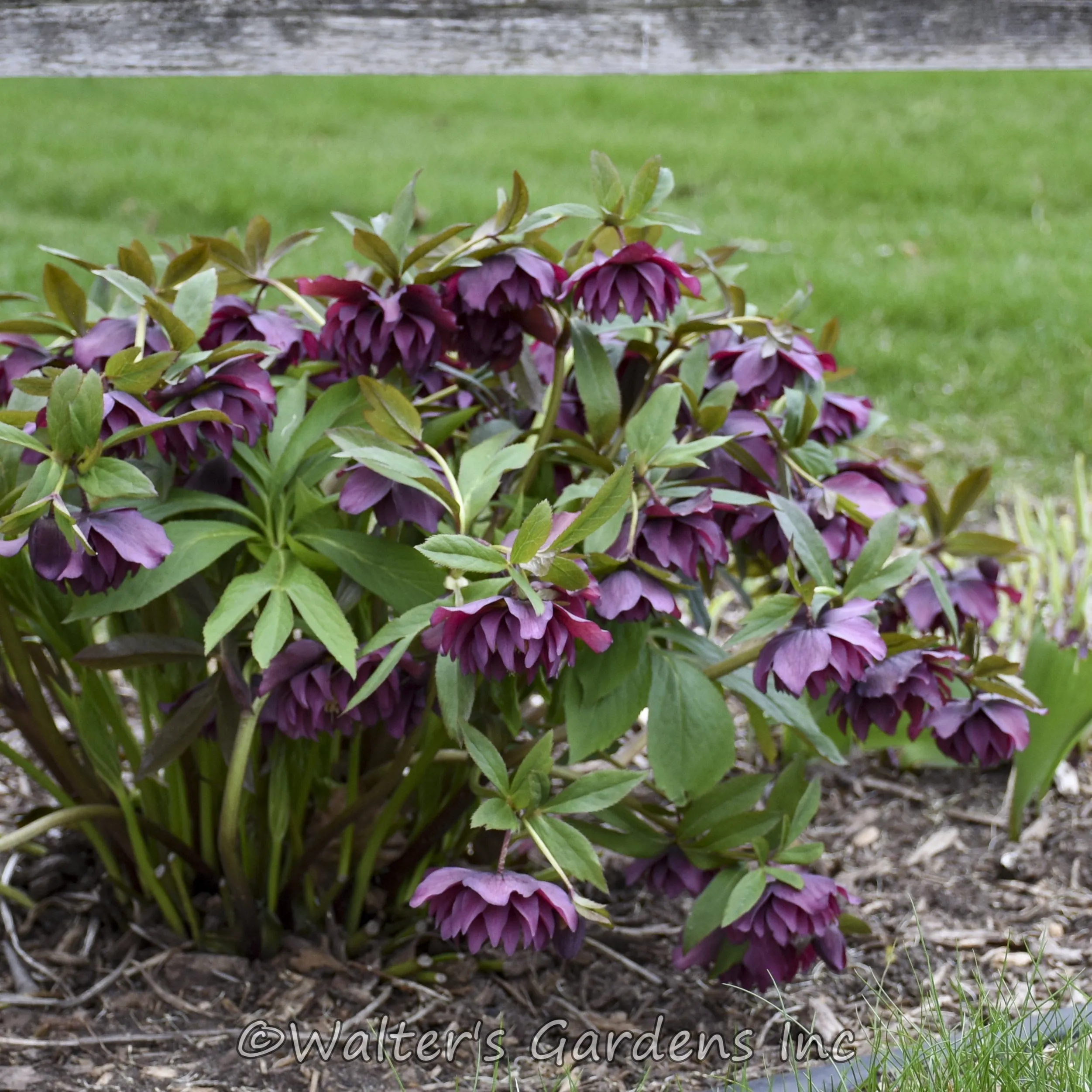
Propagating Helleborus Honeymoon plants is a rewarding way to expand your collection and share these beautiful plants with others. There are a couple of common methods that can be employed to create new plants from existing ones. Choose the method that best suits your gardening skills and the specific plants you are working with, as the success of your propagation efforts will depend on the plant’s health, timing, and your attention to detail. Propagation allows you to increase your stock of these lovely plants, so you can enjoy them in multiple areas of your garden.
Methods of Propagation
There are a few methods for propagating Helleborus Honeymoon plants. Seed propagation can be attempted, but seeds can take a long time to germinate and may not always produce plants that are identical to the parent plant. A more reliable method is division, which involves separating the plant’s roots into smaller sections. Division is also an excellent way to rejuvenate older plants. Another method is tissue culture, which is a more advanced technique often used by nurseries. Consider the time and effort required and opt for the method that suits your experience level. Remember that with patience and the right conditions, you can successfully expand your Helleborus Honeymoon collection.
Dividing the Plants
Dividing Helleborus Honeymoon plants is typically done in late summer or early autumn, after the plants have finished blooming. Carefully dig up the entire plant, taking care to preserve as much of the root system as possible. Gently separate the root ball into sections, each with healthy roots and a portion of the crown. Replant the divided sections in their new locations, following the planting guidelines outlined earlier. Water the newly divided plants thoroughly and provide them with the same care as established plants. Dividing your plants will help you propagate these plants. This is a great way to increase the number of plants in your garden.
Common Problems and Solutions
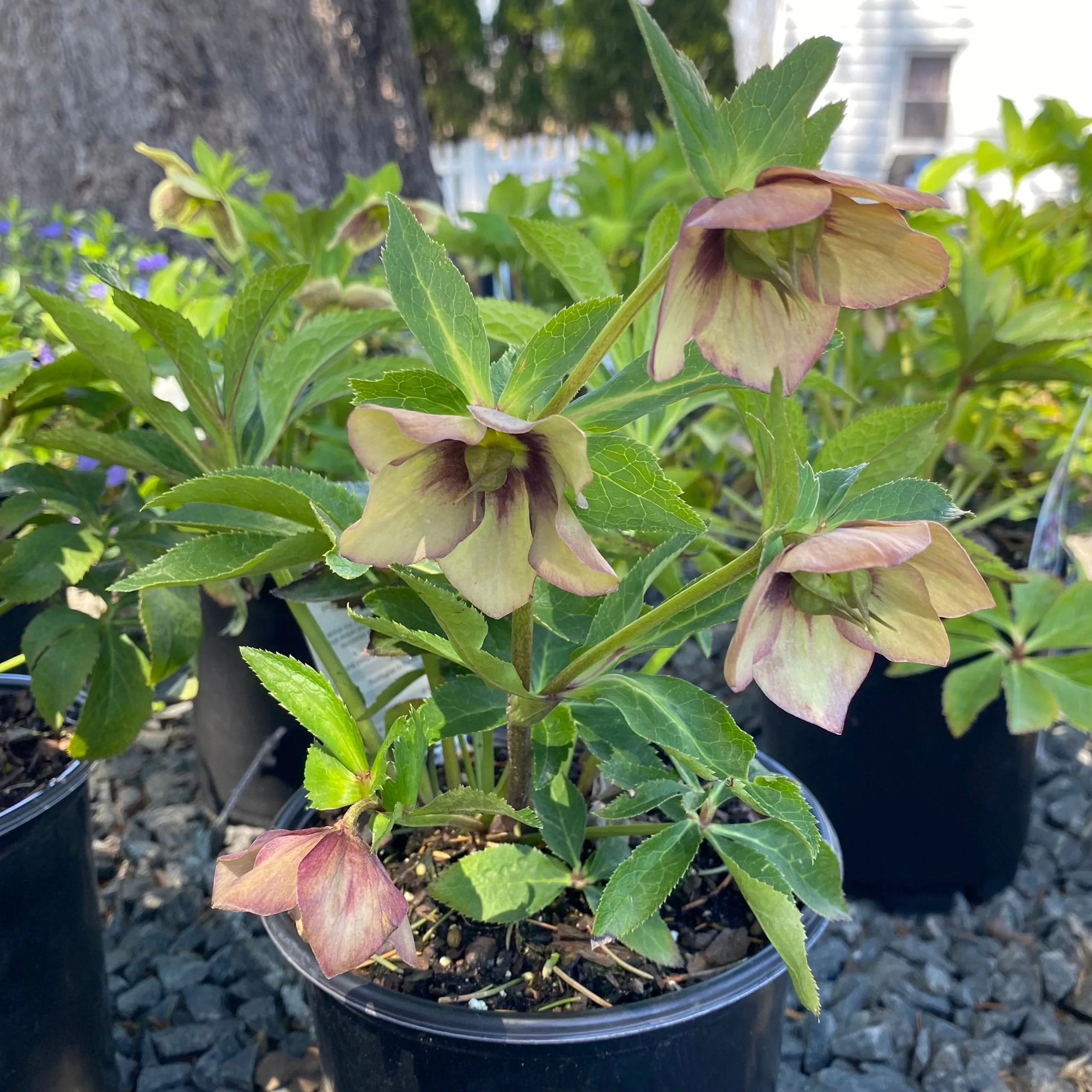
While Helleborus Honeymoon plants are relatively easy to care for, there are a few common problems that gardeners may encounter. Knowing how to identify and address these issues will help you maintain the health and beauty of your plants. By addressing any problems quickly, you can ensure that your plants thrive. With proper care and attention, you can ensure that your Helleborus plants remain healthy and vibrant, adding beauty to your garden.
Yellowing Leaves
Yellowing leaves in Helleborus Honeymoon plants can be caused by various factors. Overwatering or poor drainage can lead to root rot, which causes the leaves to turn yellow. Check the soil moisture and ensure that your plants are not sitting in waterlogged conditions. Nutrient deficiencies, particularly a lack of iron, can also cause yellowing leaves. Consider performing a soil test to determine any nutrient imbalances and amend the soil accordingly. Pests or diseases can also lead to yellowing leaves, so inspect your plants for any signs of infestation or infection. Addressing the root cause will help bring your plants back to their healthy state.
Lack of Blooms
If your Helleborus Honeymoon plants are not producing many blooms, there could be several reasons. Insufficient sunlight is a common culprit, so ensure that your plants are receiving adequate light. Over-fertilizing can also lead to lush foliage but few flowers. Avoid excessive fertilization, particularly with nitrogen-rich fertilizers. Another reason for lack of blooms is inadequate care, such as a lack of water or the presence of pests or diseases. Pruning at the wrong time can also remove flower buds before they have a chance to bloom. By addressing these issues, you will be able to promote the plant’s beautiful blooms.
Where to Buy Helleborus Honeymoon Plants
Helleborus Honeymoon plants are available for purchase at a variety of locations. Local nurseries and garden centers are excellent resources, as they often carry a selection of varieties and can provide expert advice. When choosing where to buy, consider checking out specialty nurseries that focus on perennials, as they will offer a wide selection. Online retailers also offer a convenient way to purchase plants, with the added benefit of home delivery. Regardless of where you buy your plants, make sure to choose healthy, well-established plants with good foliage and a strong root system. Properly sourced plants are crucial for success.
